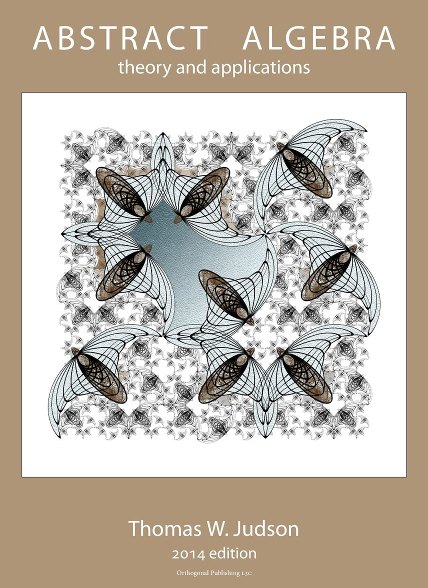Authoring Open Source Mathematics Textbooks
Robert A. Beezer
Department of Mathematics and Computer Science
University of Puget Sound
A First Course in Linear Algebra
FCLA is an introductory textbook conceived as open-source,
free to copy/modify/distribute with a GFDL license
- December 2003: Began revising course notes
- December 2006: Version 1.0, \(\mathrm{\LaTeX}\)
- December 2006: (X)HTML Version
- July 2008: jsMath Version
- Summer/Fall 2012: Conversion to prototype XML
- Summer/Fall 2012: \(\mathrm{\LaTeX}\)/PDF and HTML versions
MathBook XML
New source format for authoring scholarly work
- May 2013: Shuttleworth Foundation Flash Grant
- Frees an author from presentation and technical details
- Write once, read anywhere
- Multiple output formats from one source
- Designed to be easy for authors
- \(\mathrm{\LaTeX}\) syntax for math (and math only)
- NOT “data exchange” XML
Abstract Algebra: Theory and Applications
- By Tom Judson, with help from RAB
- AATA was once a “real” book (1990-1997)
- Open source'd in February 2009
- #1 in Google for “abstract algebra textbook”





Physical Books
Pros:
- Stable format
- No batteries
- Well-understood navigation
- Bookshelf trophies
Physical Books
Cons:
- Expensive (AATA: $23.70)
- Manufactured (AATA: \(\sim\)$10)
- Bulky
- Hard to search (index, table of contents)
- Supplements are additional (e.g. solutions, technology)
- Out-of-Print (AATA: print-on-demand)
- Edition churn
PDF (Portable Document Format)
Pros:
- Preserves familiar printed page format
- Portable: readable on a tablet
- Inexpensive to distribute
- Navigation: searchable, hyperlinks
- 16 GB USB = 8,000 copies of AATA
- Math: pdflatex
- Many “lecture notes” exist for “free” in this format
PDF (Portable Document Format)
Cons:
- Preserves familiar printed page format
(table of contents, index, margins, page numbers, aspect ratio) - Limited interactivity (hyperlinks)
- Suboptimal on tablets, smartphones
Web (HTML)
Pros:
- Available wherever there is a web browser
- Responsive design (smartphones)
- Interactivity options: GeoGebra, WeBWorK, Sage
- Navigation: tree view of hierarchy
- Navigation: in situ cross-references
- Navigation: information hiding (e.g. proofs, solutions)
- Math: MathJax (successor to jsMath)
Web (HTML)
Cons:
- Requires internet connection (currently)
- Search not implemented (yet)
- Difficult to commercialize content
Question:
- Which parts of traditional book design (a 580-year-old technology) do we keep and which do we upgrade/replace?
- For example, footnotes should definitely be “pop-ups” (not a hyperlink to the bottom of the page)
Other Output Formats
- EPUB: Limited interactivity (Lon Mitchell, Chris Hughes)
- Sage Notebook Worksheets: difficult to organize long documents
- iPython Notebooks: working conversion for single notebooks
- S5 Slideshows: meta-example, this talk
- Sage Math Cloud worksheets, linked into book-length documents
SageMathCloud
- Student assignments in Sage
- Exercises and content in SMC native format
Resources
- Code: GitHub, GPL'ed, rbeezer/mathbook
- Discussion: Google Groups' mathbook-xml-support
- Website: mathbook.pugetsound.edu
- FCLA: linear.pugetsound.edu
- AATA: abstract.pugetsound.edu
- Sage Math Cloud: cloud.sagemath.com
Thanks for listening!